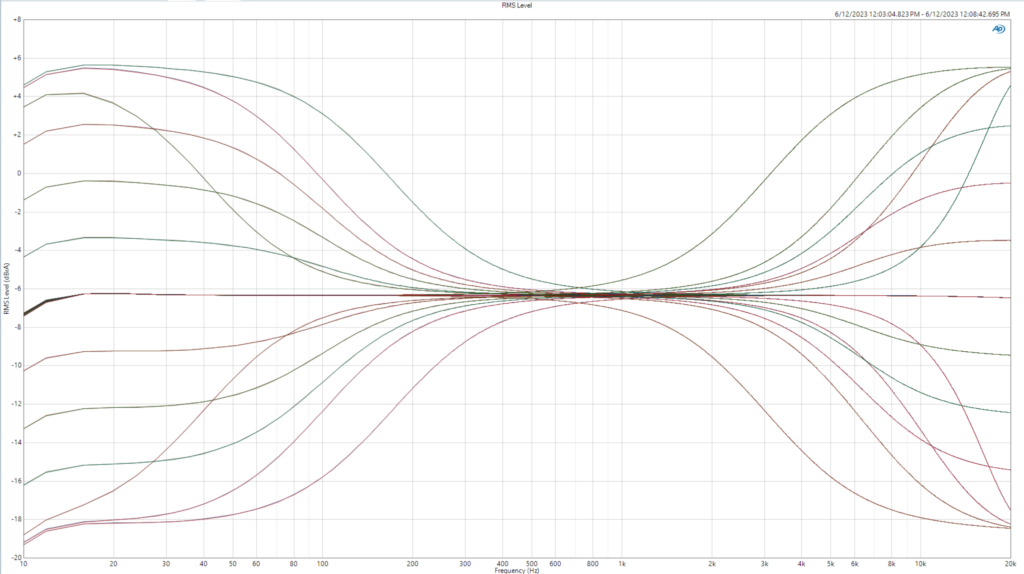@HeyWaj10 The parametric bass and treble controls currently allow custom frequency and gain adjustment. There is no support for notch filters, yet. The XU208 is limited to processing 2 bands/filters in real-time. If there is adequate interest, we could replace the treble filter with a notch filter.
[Detail below is copied/pasted from blog.jdslabs.com]
Element III’s Options Menu has been reorganized in firmware v2.5.0. You will find a new “DSP Config (USB)” submenu, allowing parametric adjustment of Bass and Treble. In other words, you can adjust headphone response to suit your taste, regardless of operating system, and without extra software.
Each equalizer band involves a parametric biquad filter, processing on a dedicated core in near real-time, with Q = 0.707. Average latency remains the same, with or without DSP filtering. In the five impulse response checks below, latency coincidentally tested higher with DSP Off. Impulse response time varies by a few milliseconds with each test, so do not take this too seriously.
Element III performs subtractive equalization with automatic volume compensation, meaning it is impossible to clip the amplifier or overflow the DAC. You will notice an increase in the volume level readout when applying positive Bass/Treble Gain, which represents the
effective signal volume. For example, if you typically listen at -30dB and apply 10dB of Bass, you will find yourself listening around -20dB.
Each band allows up to +/-30dB of gain adjustment at 8 possible frequency choices. We’re now memory constrained, but have the option to compile different cutoff frequencies upon request:
Bass Frequencies: [40Hz, 60Hz, 80Hz, 100Hz, 110Hz, 125Hz, 150Hz, 170Hz]
Treble Frequencies: [3k, 4k, 6k, 8k, 9k, 10k, 12k, 14k]
DSP settings are stored separately for Headphone Output and RCA/Line Output, and the DSP cores are bypassed entirely when gain values are set to zero (default). You will also see “DSP Active” displayed when DSP cores are in-use.
 Frequency Response with various Bass & Treble settings
Frequency Response with various Bass & Treble settings
For now, DSP is supported for PCM playback over USB, for both UAC2 and UAC1. The DSP cores are bypassed when playing DSD, DoP, or S/PDIF streams.












